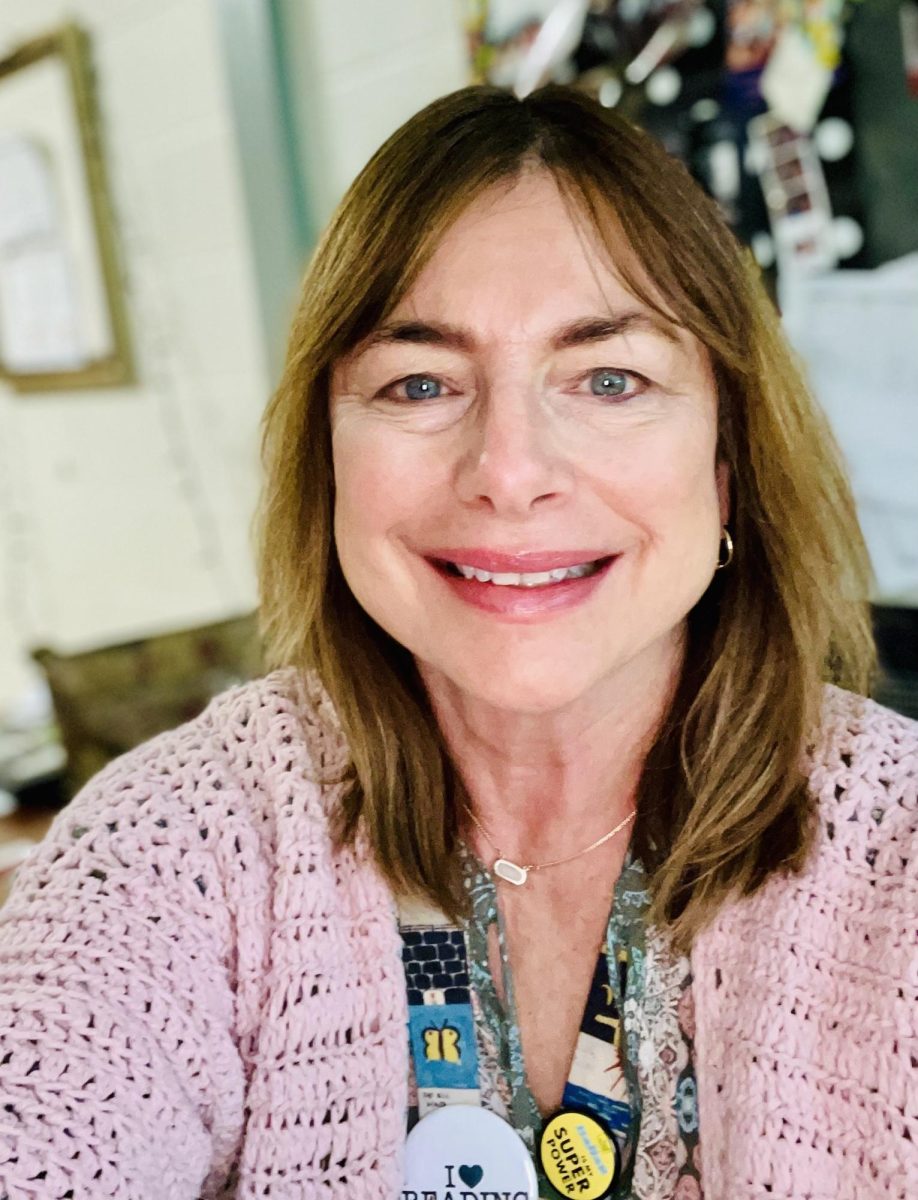
By Elana Amir
You may have noticed that the library is currently undergoing renovation, but what you may not have noticed is the room directly to the left of the sign-in desk. Posters adorn the walls, a bookshelf holds a few pairs of shoes, some blankets and yoga mats, and students sit on yoga mats with their eyes closed. Although it may not be obvious at first, this space, exclusively dedicated to mindfulness, is one major step in the mindfulness initiative at South High.
The room provides students and faculty with a space to relax and focus on their well-being. Even if you only have a few minutes, the room is available before, during, and after school to de-stress, refocus, and relax. Yoga mats, meditation pillows, and blankets are stored in the room, and the large space allows students to practice either yoga or meditation. Coloring books, stress balls, and mindfulness-related literature are also available.
Mindfulness is the basic human ability to be fully present, aware of where we are and what we’re doing, and not overly reactive or overwhelmed by what’s going on around us. The term seems straightforward, but applying mindfulness in our everyday lives is no easy task. It can be difficult to take time to improve your well-being when you’re focused on studying for a test or perfecting an essay. Nonetheless, it is imperative to find a way to reduce stress, refocus, and practice mindfulness.
The mindfulness initiative turned into a collaborative effort with the help of the Mindfulness Club. At their meetings they not only set goals to be more mindful, but also to prepare items for the room in the library. They recently created glitter-filled mindfulness jars, which can be used to calm your breathing or enhance your concentration. “There is always more to learn and be mindful about. The club allows everyone to share their own mindful tools and skills,” said junior Elina Malamed, one of the students who created the club.
Malamed discovered a passion for mindfulness during a trip to India two summers ago. She learned how to meditate and began to integrate mindfulness into her daily life. Last year, Malamed became concerned with students’ stress levels and decided to reach out to those who felt emotionally impacted by the stresses of school. She contacted school psychologist Ms. Jennifer Zash, who felt similarly. “The need to relieve the students’ stress was clear, and we wanted to give them a way to learn strategies and a space to practice them,” Ms. Zash said. With the help of Ms. Hastings, the co-advisor of the Mindfulness Club, the club formed.
Creating a mindfulness room has been a goal of Ms. Zash’s for many years. Finding a supervised space was the main concern in previous years, but the library was deemed the perfect place. Money was dedicated to renovating the library once the school bond proposal passed last May, and the ideas for a space dedicated to mindfulness were put into action. The yoga mats, meditation pillows, and blankets Ms. Zash ordered finally had a home. “I had a vision board of an idea that I was so passionate about, so I gathered the supplies. I thought that if you believe, it’s going to come, and it did,” she said.
Ms. Zash realized how powerful a tool mindfulness is after taking a mindfulness-based stress reduction course five years ago. She was inspired by its accessibility and unique purpose, and she realized that schools needed a means to deliver its services to students and staff. In order to introduce mindfulness into the building, Ms. Zash spoke at a faculty meeting about the topic of self-care. In spring of 2016, she started “Mindful Mondays,” a series of emails sent out to staff with a weekly challenge. A weekly “Zen Calendar of Events” was attached, with one mindful activity scheduled for each day. This included yoga on Mondays with Mr. Gottfried and mindful nature walks with faculty on Thursdays. Last year at Superintendent’s Conference Day, Ms. Zash suggested that a mindfulness teacher come speak to the district faculty. The planning committee agreed, exposing the entire district to mindfulness for the first time.
The health and physical education department chairs have contributed to the mindfulness initiative as well. In fact, four of Ms. Callaghan’s health classes participated in an orientation to the room. Ms. Zash, Ms. Hastings, and several Mindfulness Club members led the classes through guided meditations and suggested ways to use the room. In addition, during the week of Jan. 8, a mindfulness instructor from BOCES art center will come to speak to every physical education class. Ms. Zash is very grateful for the support of the administration. “Ms. Callaghan, Mr. Umstatter, Mr. Reader, Dr. Gitz, and Mr. Duggan specifically have been 150% supportive of efforts towards the mindfulness initiative,” she said.
Ms. Zash’s goal is for mindfulness to introduce a cultural shift that equally values academics and wellness. It is important for time, energy, and money to be placed towards caring for the community. Everyone’s feedback is necessary for the initiative to be successful. “This has been such a beautiful coming together of the minds and hearts of everybody involved. Everyone is so overworked and in automatic pilot mode. Giving them a place to slow down and breathe will allow us to keep Great Neck South as amazing as it’s always been,” said Ms. Zash.






